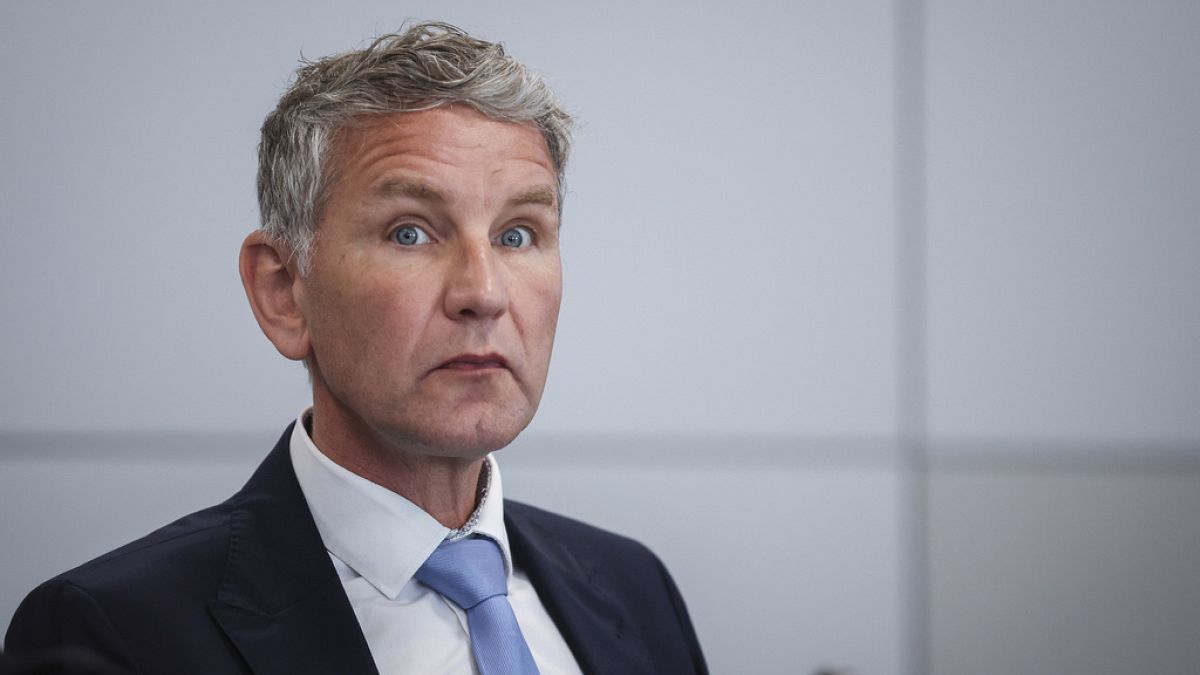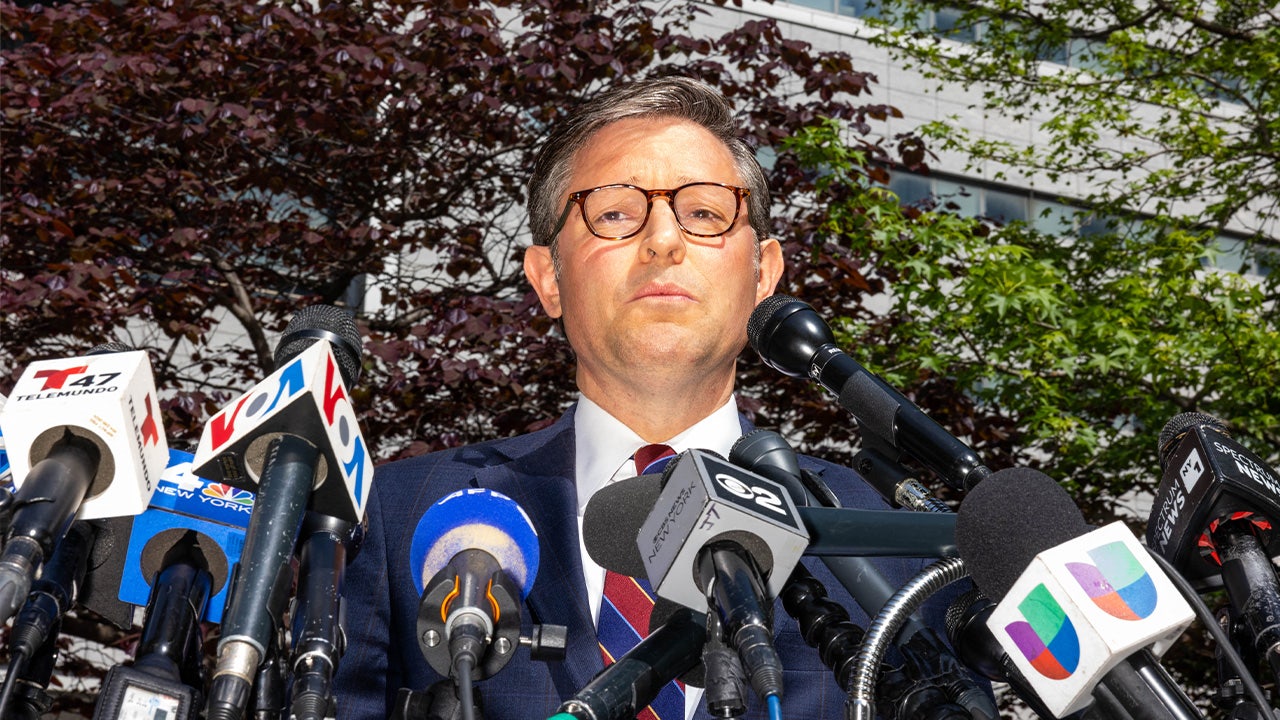Science
Addiction Treatment Eludes More Than Half of Americans in Need

Why It Matters: Opioid addiction affects every part of American society.
Addiction cuts across class, race and geography, the KFF researchers found. Rural and white Americans were the likeliest to report personal or family opioid addiction, but significant percentages of Black, Hispanic, urban and suburban families did, as well.
White families were more likely than Black or Hispanic families to say that they had received treatment. Overdose fatality rates among Black Americans have climbed substantially in recent years, the Centers for Disease Control and Prevention found in a study last year.
Low household income levels also appear to influence experience with addiction, KFF found. A higher percentage of households making less than $40,000 annually reported possible prescription painkiller, illegal drug and alcohol addiction, compared with households with higher incomes.
Addiction has also weighed on the psyche of families, the study found. A third of Americans fear that someone in their family will die of an opioid overdose, researchers discovered. Roughly four in 10 adults said that they were concerned a family member would unintentionally ingest fentanyl, a potent and deadly synthetic opioid that is often mixed into other drugs or counterfeit pills and that can go undetected.
Background: Recent efforts to make treatment more accessible have had limited success.
In December, Congress scrapped a special licensing requirement for health providers who want to prescribe buprenorphine, a medication that dulls cravings and prevents withdrawal, expanding the number of places drug users can seek treatment. But this year researchers found that less restrictive training requirements for health workers had not led to greater prescribing of the medication.
Federal researchers this month found that in 2021, only about 20 percent of the roughly 2.5 million people with opioid use disorder had received medication treatment, a problem that especially affects Black adults, women and the unemployed.
The reasons may be cultural and financial. KFF researchers published some anonymous responses from survey participants who were asked why they or a family member did not get treated. “We are not raised that way,” a 22-year-old Black woman in Georgia said.
“Lack of funding, no insurance coverage — turned away for treatment,” a 50-year-old white woman in South Carolina said.
More than 80 percent of the respondents said that naloxone, a medicine that can reverse an opioid overdose, should be readily available in places like bars and fire stations.
What’s Next: Getting treatment into more medical practices.
Dr. David Fiellin, an addiction physician at the Yale School of Medicine, said the survey showed the need for a stronger federal response to substance use disorders, akin to the one for AIDS. Primary care practices are especially critical to treating Americans, he noted.
“There’s often a misunderstanding of what treatment actually looks like and what it is — people often look to a quick fix,” he said, referring to a detox strategy. “Effective treatment tends to be much more long term and requires addressing the denial that can be part of the condition.”
President Biden this month requested $350 million from Congress to fund addiction treatment and other drug-related services across the country. The Biden administration and federal lawmakers also continue to search for ways to loosen restrictions on treatment.
Methadone, another opioid addiction medication that alleviates cravings, is heavily regulated and often difficult for drug users to access and use continuously, prompting repeated calls from addiction physicians and public health experts for easing restrictions.

Science
Doctors saw younger men seeking vasectomies after Roe vs. Wade was overturned
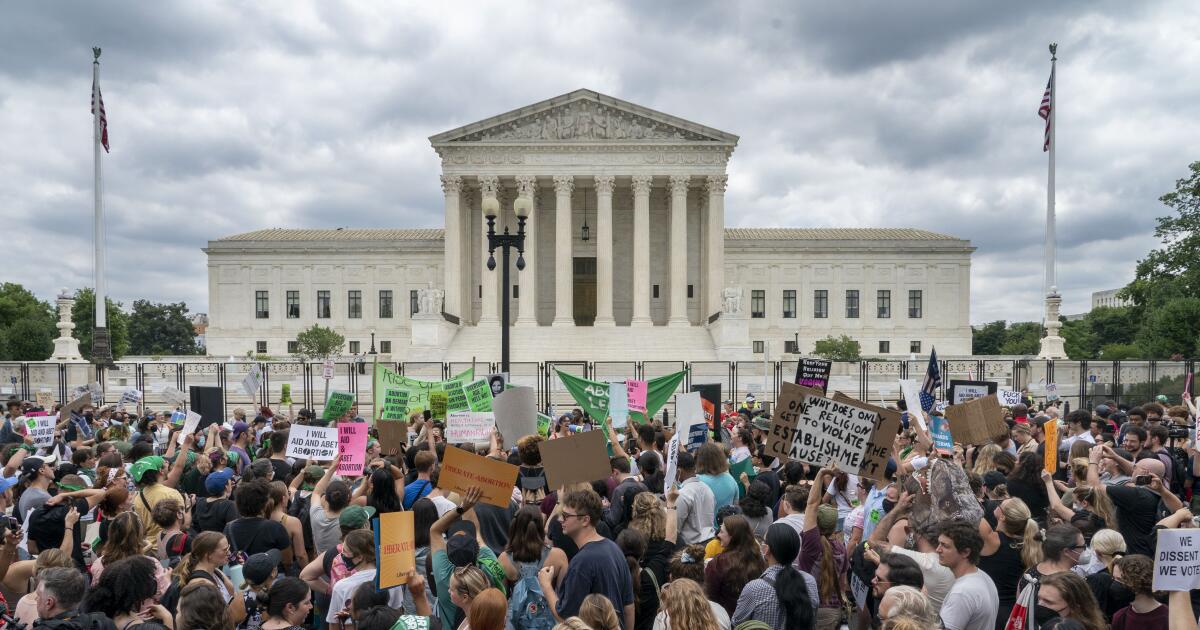
Kori Thompson had long wrestled with the idea of having a child.
The 24-year-old worried about the world a kid would face as climate change overtook the globe, fearing the environmental devastation and economic strain that could follow. He had been thinking about getting a vasectomy ever since he learned about the sterilization procedure from a television show.
But “the thing that actually triggered it was the court decision,” Thompson said.
After the Supreme Court overturned Roe vs. Wade nearly two years ago, paving the way for states to usher in new restrictions on abortion, doctors started seeing more young adults seeking vasectomies or getting their tubes tied, emerging research has found.
An analysis by University of Utah researchers, released as an abstract in the Journal of Urology, found that after Dobbs vs. Jackson Women’s Health Organization, a rising share of vasectomy patients were under the age of 30.
That percentage went from 6.2% to 9.8% after the Supreme Court decision, based on their analysis of a national database that includes hundreds of millions of patients.
Among the young patients who pursued the procedure is Thompson, who decided to get a vasectomy in the aftermath of the court ruling. In Georgia where he lives, abortion is illegal roughly six weeks into a pregnancy — a point before some people may learn that they are pregnant.
“If it’s effectively illegal,” Thompson said, “then I felt that this was necessary.” His girlfriend also disliked the effects of hormonal birth control, “so now I’ve decided to go on permanent birth control. It’s way easier.”
The University of Utah researchers found that before the Supreme Court ruling, vasectomy rates were consistently higher in states categorized as “hostile” or “illegal” for abortion by the Center for Reproductive Rights, compared to states that were not as restrictive. The same was true after the ruling.
Yet researchers also found an overall uptick in vasectomy rates after the Dobbs decision — both in states where abortion is heavily restricted and those where it is not.
In California, where state leaders have vowed to protect abortion rights, the rate of men getting vasectomies rose after the court decision, from roughly 7 to 13 per 100,000 potential patients, the Utah team found.
“We’re just seeing an overall increase in vasectomies — regardless of political climate” in each state, said Dr. Jessica Schardein, a urologist at the University of Utah. Schardein said the Supreme Court ruling and increased marketing for vasectomies may have gotten more people thinking about the procedure.
“People in general, even if they don’t have a uterus, are taking responsibility for their reproductive health,” Schardein said.
Her team also examined tubal sterilizations — a medical procedure often called “getting your tubes tied,” performed on the fallopian tubes connected to the uterus — and found that after the court decision, there was an increase in the percentage of patients ages 18 to 30 among those undergoing the procedure.
In Riverside County, Jacob Snow decided to get a vasectomy after the birth of his third child, concluding it was a safer option than his wife had for sterilization. “There’s no reason why all the blame and stress and trying to stop a pregnancy should be placed on the female when I can stop it at my end,” the 28-year-old said.
Even though Snow was already a parent, the doctor balked because of his age, he said. “They said I might change my mind in the future,” Snow recalled. “They flat out just refused.”
Vasectomies are intended to be permanent. The surgery may be able to be reversed with other procedures, but physicians caution that doing so is not a guaranteed option.
Snow ultimately found another doctor to do the procedure. Besides the pushback from the first physician, Snow said some men have been aghast when he tells them he had a vasectomy, saying it would make them feel like less of a man. But Snow said he doesn’t “feel that reproducing is how I need to prove that I’m a man.”
The University of Utah findings, presented at the annual meeting of the American Urological Assn., have been echoed in other recent research.
Last month, researchers from the University of Pittsburgh School of Public Health and Boston University published findings in JAMA Health Forum showing “an abrupt increase” in vasectomies and tube tying following Dobbs, with a sharper increase in tubal ligation.
The difference “likely reflects the fact that young women are overwhelmingly responsible for preventing pregnancy and disproportionately experience the health, social and economic consequences of abortion bans,” University of Pittsburgh assistant professor Jacqueline Ellison said in a statement.
Another analysis in the Journal of Urology that included multiple medical centers around the country — including UCLA — found that after the Dobbs decision, the typical patient seeking a vasectomy was younger than before. Researchers also found that an increased share were childless.
There was also a rise in the number of patients consulting doctors about the medical procedure, said Dr. Kara Watts, a urologist at Montefiore Medical Center in New York City — and longer waits to get the surgery after a consultation. If wait times weren’t an issue, Watts said, “the numbers would probably be even more dramatic.”
Researchers detected a similar trend in the UC San Diego health system, where there was a rise in men seeking consultations about vasectomies after the Dobbs decision, as well as increased rates of patients going through with the procedure after their consultations, according to another review presented at the urology meeting.
Even though California has enshrined abortion rights in its state constitution, “I think that vasectomy consultations and completion rates still increased due to the national media coverage on the Supreme Court ruling,” said Dr. Vi Nguyen, one of the authors of the analysis.
And at Ohio State University, urologists surveyed patients about why they chose to get vasectomies and found that after the Dobbs decision, they were more likely to cite concerns about abortion access or say that “they did not want to bring children into the current political climate.”
Other reasons for wanting a vasectomy, such as health concerns, did not change after Dobbs, the survey found. Dr. Jessica Yih, an assistant professor of urology at the Ohio State University, wasn’t surprised.
“Immediately after the Dobbs ruling, many people were extremely concerned about their reproductive rights,” Yih said in an email. “We had a threefold increase in referrals of patients who were wanting to be scheduled to discuss vasectomies and the number of vasectomies performed around this time increased dramatically.”
Abortion has been a sharply contested issue in Ohio, where a law banning abortion after six weeks of pregnancy initially went into effect after the Dobbs ruling. That ban was later put on hold in court, and Ohio voters have since backed protections for abortion access in its state constitution.
“Many patients told us at our clinics that they wanted their vasectomies done as soon as possible due to concerns about restrictions in abortion access,” Yih said.
Science
Want to live to 100? That may depend on your sex

Do you want to live to 100? The path to becoming a healthy centenarian — as opposed to just a centenarian — is surprisingly different for those born as women and men, says social researcher and author Maddy Dychtwald. And it’s never too early to start on the journey, even when you’re young and spry. (We’re talking to you, zoomers.)
As co-founder of Age Wave, a nonprofit think tank focusing on longevity and aging, Dychtwald has been researching these topics for nearly 40 years. In her new book, “Ageless Aging: A Woman’s Guide to Increasing Healthspan, Brainspan, and Lifespan,” Dychtwald addresses the most recent aging picture for women and identifies a holistic plan for longevity. It weaves together science and medicine, psychology and spirituality, as well as financial advice in a research-based guidebook that’s brimming with actionable steps.
“There’s this ripple effect,” Dychtwald says of the lifestyle she recommends for maximizing healthspan — meaning how long you are living in good health, versus how long you are just living. “If you can impact one piece — sleep, nutrition, fitness, having a sense of purpose and connection — it begins to affect the others.” This interview has been edited for length and clarity.

Shelf Help is a new wellness column where we interview researchers, thinkers and writers about their latest books — all with the aim of learning how to live a more complete life.
How is longevity different for women than men?
Woman have actually won the longevity lottery. We live, on average in the United States, six years longer than men. So that’s incredibly positive. But there is a dark side to this. And that is: We women, on average, spend the last 12 to 14 years in declining health. So we are not doing a great job of matching our healthspan to our lifespan. There’s a gendered gap when it comes to healthspan. Why? I don’t know that the answer is clear, even in the minds of scientists. What we do know is that estrogen has protective properties for women. But once their estrogen levels decline, they have more health challenges than men do, as they get older. But it’s something scientists don’t fully understand yet.
If women are 51% of the population, doesn’t it stand to reason that scientists would better understand this by now?
You would think! I think the healthcare system, overall, is well-meaning. But it’s been created by men and as a result, the focus has really been more on men than women. One great example of how women can, as a community, really motivate physicians and researchers and scientists to change is the whole breast cancer issue. Women really spoke out on this and I think, as a result, we’ve seen great strides in research and survival rates and treatment methodologies.
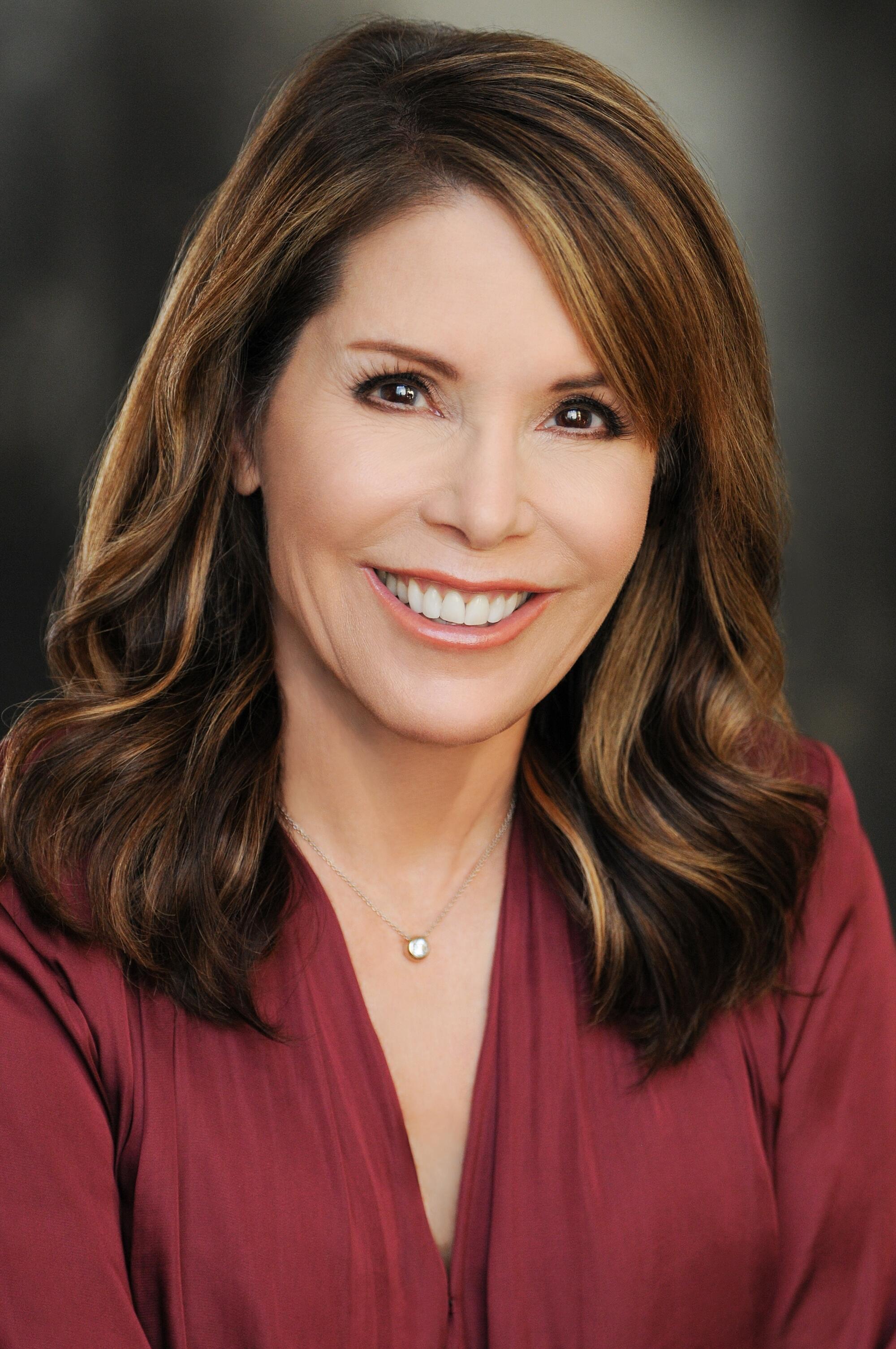
Author Maddy Dychtwald.
(Lisa Keating Photography)
You endured a health challenge, which is one of the things that led to your writing this book. Can you tell us about that?
I’m a big exerciser, it’s how I manage stress. I started getting pain in my hips, to the point where I was limping. I did PT, I got cortisone treatments, I did a variety of things to manage the pain. But it wasn’t solving the problem. Turns out I needed double hip surgery — I was 68, which is young for the condition I had. But they couldn’t see me for months — and I was in excruciating pain. I started researching and learned, from experts in my network, that I needed to get my inflammation levels down. I went on an anti-inflammation diet — I cut out gluten, sugar and dairy — and I found that within six weeks all my pain went away. I thought: “Whoa, there are all these things that we can all do — and they don’t necessarily cost any money — to live better, longer.” I started looking at other things I could do. I worked with a psychiatrist at Harvard who taught me about meditation and affirmations. I was doing precovery, essentially — preparing for my surgery in advance. And it made a difference. This book is the distillation of all that, along with the work I’ve been doing at Age Wave for 40 years.
New research around genetics versus lifestyle choices also informs the book — and your decision to direct it at women. What does the latest research tell us about how to influence our destiny?
We used to just assume that genetics were our destiny. That whatever our genetic package is, that’s kind of the hand that we were dealt. But, in fact, according to the most recent science from Alphabet’s Calico Life Sciences and other research, up to 90% of our health and longevity are literally within our control. And I find that an incredibly empowering piece of information. It gives us almost total agency. I didn’t want to just keep that information to myself, I wanted to share it with the world. There are a lot of books out there on longevity, but there aren’t many that really focus in on women and longevity. And obviously, women and men are really different.
We used to just assume that genetics were our destiny. That whatever our genetic package is, that’s kind of the hand that we were dealt. But, in fact, according to the most recent science … up to 90% of our health and longevity are literally within our control.
— Maddy Dychtwald
During COVID, I was home more than I had been before. There were so many health issues I saw around me and I had an opportunity to really lean into my own sense of purpose. And in order to lean into it in a way that felt good to me, I wanted to [educate] women in their 40s, 50s, 60s and beyond. There are tens of millions of women just in the U.S. in that age group who are starting to feel the aches and pains of getting older, or who are coping with a chronic degenerative disease, or just dealing with the reality of menopause — and who are looking for solutions. I wanted to give women a one-stop resource to clear up the confusion, give them straightforward answers based on science as well as action steps to live better, longer.
You talk about a “holistic recipe” for healthy aging as a woman. What are the ingredients to that — what daily activities, for example, do you incorporate to promote longevity?
There are a lot of books out there on sleep or exercise or nutrition or hormones or having a positive attitude — and by the way, our attitudes toward our own aging can actually add 7½ years to our lifespan — but it’s not just about one thing, it’s all these things working together. They don’t exist in silos.
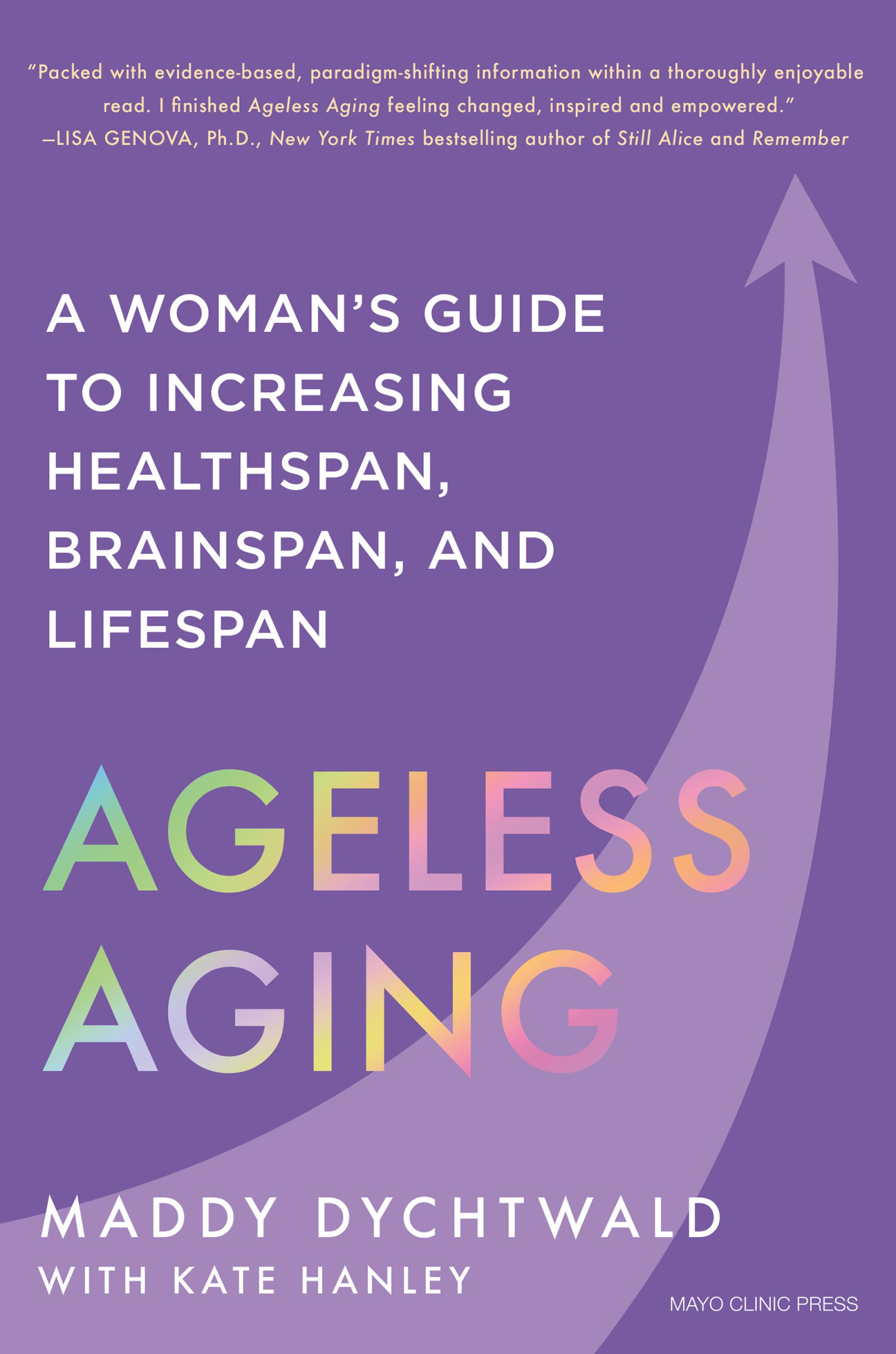
Take finances — there’s a gender pay gap. I encourage all women to take charge of their finances. If you don’t have your financial house in order, chances are it will affect your stress levels, your health, your well-being. And you may not even have the financial well-being to pay for your health — and that’s a scary place to be.
If you exercise effectively, it affects your mood and your stress. That helps with sleep, which helps with cognition and so many other things, including managing your finances. It’s cyclical.
Sleep is such a key ingredient. What do you do to manage that?
Sleep is not my superpower. But I learned there were things I could do. One was to really be mindful of my circadian rhythms; controlling our sleep-wake cycles are very important. I learned that what I did during the day was as important, if not more important, than what I did at night to go to sleep. It’s simple — anyone can do it — and it doesn’t cost a penny. Which is: When you get up first thing in the morning, watch the sun rise for 10 minutes. If it’s already up, get sun on your skin for 10 minutes. I do what I call “stacking my habits.” So at the same time, I do some breathing exercises that help me be calm and energetic simultaneously — what a great way to start my day.
One surprising piece of new research that you cite is that exercise has a bigger impact on health, and staving off brain decline later in life, for woman over men.
Yes. We already know that exercising in the morning is the best time of day to exercise, it brings optimal results, and it’s best on an empty stomach. But brand-new research, in a February 2024 study from the Smidt Heart Institute at Cedars-Sinai, says that women don’t have to exercise as hard, or as long, as men to get optimal results. They can get the same health benefits as men from exercise in less time.
For example, women can reduce their risk of death by 18% by doing 140 minutes of moderate aerobic exercise per week, while men need 300 minutes to achieve the same benefit. Women can also achieve the same survival benefit from moderate to vigorous aerobic exercise, like cycling or brisk walking, after 2½ hours per week, while men need about five hours. And when it comes to building muscle mass, strengthening exercises such as weightlifting or core exercises, women can achieve the same positive benefits after one session weekly while men need three sessions.
TAKEAWAYS
From “Ageless Aging”
You talk about two topics that demand the medical community’s much closer attention. What are they?
Brain health — no one wants to talk about anything above the neck — and hormones. Hormones affect our cognition, sleep, joints and bones, mood. If you’re not able to sleep at night, it affects your brain health, brainspan and longevity. If your bone density is impacted, you’re more likely to fall, and that could lead to health issues.
And Alzheimer’s disease is twice as likely to happen to women than men — people don’t want to talk about it. It’s super scary. But there are things we can do. Dr. Andrea Pfeifer, a neurosurgeon and CEO of AC Immune, a company working on a vaccine for Alzheimer’s, says probiotics are what she takes — the gut-brain connection is very real. Many physicians recommend the Mediterranean diet. I do the anti-inflammatory diet.
Another thing is limiting or stopping alcohol. And exercise — every single brain expert I spoke to said that’s the No. 1 thing to protect healthspan and brainspan. The fear of cognitive decline and Alzheimer’s for women is real, but only 4% of women have a genetic connection. And we can take steps to prevent or delay it.
Are there any positive sides of aging for women?
We gain a certain amount of wisdom and experience as we get older. According to recent studies we’ve done at Age Wave, women, as it turns out, from the age of 50 on, they seem to be gaining more confidence in themselves and their lives, whereas men seem to plateau out at around 50. This is all in general, of course. But for women, empowering.
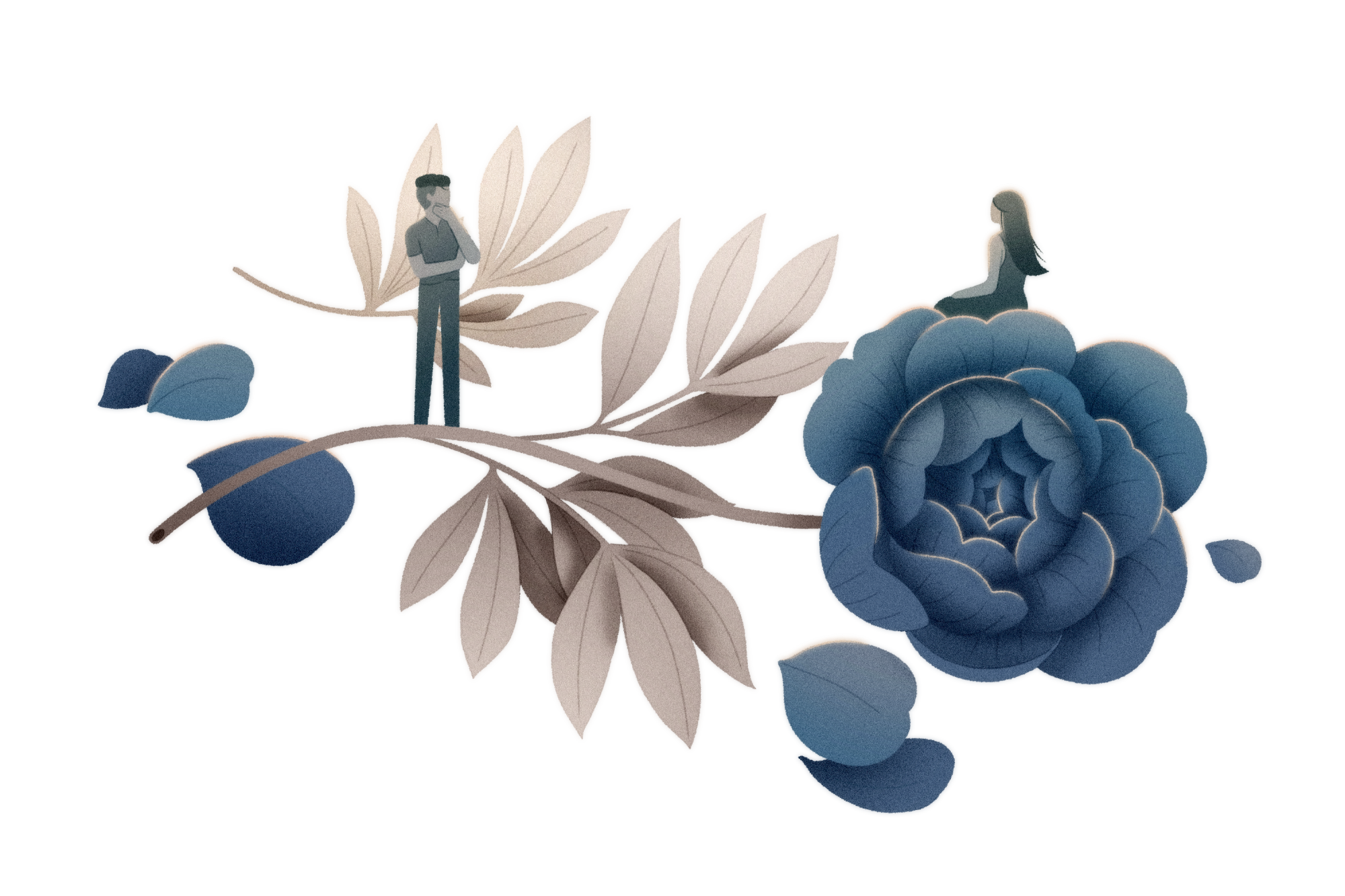
Shelf Help is a new wellness column where we interview researchers, thinkers and writers about their latest books — all with the aim of learning how to live a more complete life. Want to pitch us? Email alyssa.bereznak@latimes.com.
Science
Like water sloshing in a giant bathtub, El Niño begins an inevitable retreat
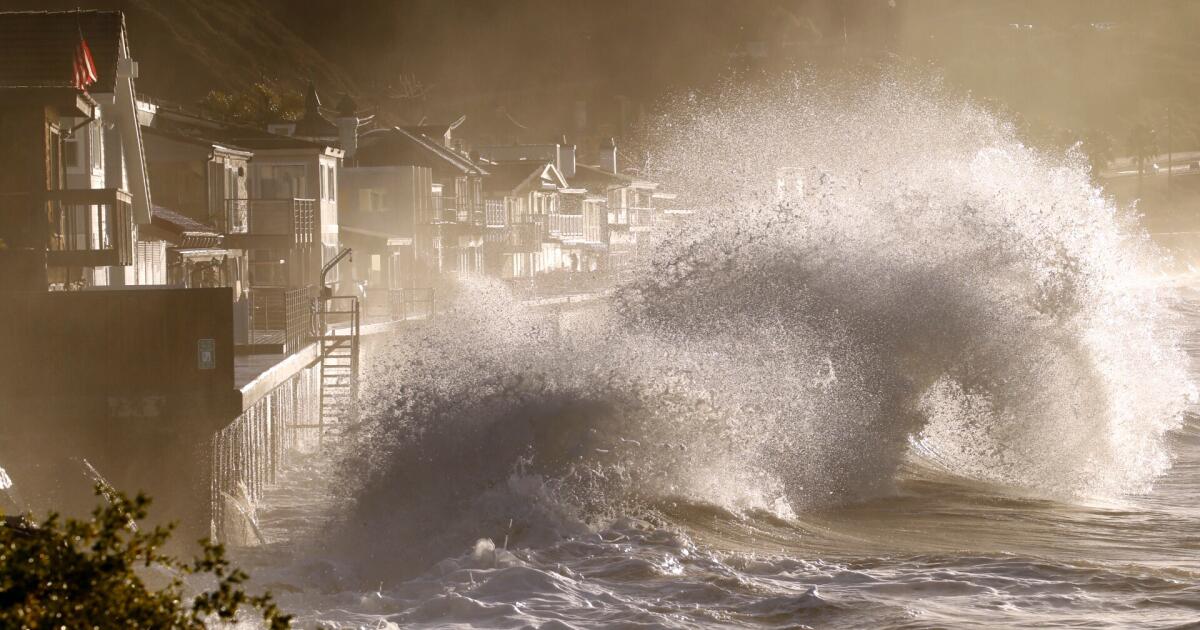
A few weeks ago, the Australian Bureau of Meteorology declared that the Pacific Ocean is no longer in an El Niño state and has returned to “neutral.” American scientists at the National Oceanic and Atmospheric Administration have been more hesitant, but they estimate that there is an 85% chance that the Pacific will enter a neutral state in the next two months and a 60% chance that a La Niña event will begin by August.
After an El Niño that was one of the three strongest in the last 40 years and that brought a wet winter to the U.S. — and California, in particular — this transition could mean a dramatic shift in weather as we enter the summer.
The progression from El Niño to La Niña, which is part of a broad system called the “El Niño Southern Oscillation,” or ENSO, is the result of conditions in the tropical Pacific. During the neutral phase, which is or soon will be in effect, the so-called trade winds rush from east to west along the equator. These winds push warm surface water with them, bathing Indonesia and New Guinea in the balmy waters of the “Pacific Warm Pool” and forcing cold water to rise from the deep ocean along the coast of South America.
Aggressive and impactful reporting on climate change, the environment, health and science.
As an El Niño phase begins, these winds weaken, so that warm sea surface temperatures move east toward South America. This can cause climatic shifts across the globe: landslides in Peru, drought in Australia, fish die-offs in the eastern Pacific and more frequent atmospheric rivers in Southern California. These changing weather patterns also weaken the trade winds further, leading to more warm water off the coast of South America, which in turn weakens the winds, and so on.
So what prevents El Niño events from continuing to strengthen forever?
Well, it turns out you can think of the Pacific Ocean sort of like one enormous bathtub, and El Niño like a wave of warm water sloshing from one end of the bathtub to another. When that wave reaches the Ecuadorean coast, it bounces back, carrying the warm water back toward Asia and Oceania, which strengthens the trade winds, which push the warm water faster, until the wave reaches the other end of the “bathtub” — this is a La Niña phase, when the west Pacific is especially warm and the east Pacific especially cold — at which point the process repeats. This is the “oscillation” that gives ENSO its name, and it is why a strong La Niña event often follows a strong El Niño.
This winter’s El Niño event had sea surface temperature anomalies of 3.6 degrees (2 degrees Celsius), which qualifies it for the unofficial status of “very strong El Niño.” As is typical, the warm waters of El Niño led to high global temperatures, but because of the unprecedented effects of climate change, these temperatures were anything but typical. In December, when El Niño was at its peak, global surface temperatures were 0.45 degrees (0.25 degrees Celsius) above the next hottest December on record.
This increase may not seem so unusual given the current era of ever-climbing temperatures, but when you consider that the difference between the coldest December on record (back in 1916) and the second-hottest (in 2016) is less than 3.6 degrees, it is far more shocking — so surprising that prominent climate scientists have begun to publicly wonder whether there are elements missing from our understanding of climate change.
Fortunately, the onset of neutral ENSO conditions, followed by the likely La Niña, should begin to bring global temperatures down, at least temporarily. This will be little consolation for the U.S., as the National Weather Service predicts above-average summer temperatures for virtually the entire country. Moreover, La Niña events are associated with drier conditions across the southwestern U.S. that could persist into next winter. While this year’s generous Sierra snowpack should insulate California from the effects of a scorching summer, the state is never more than one below-average winter from a drought.
There are also potential implications for the rest of the country — La Niña has been linked to higher hail and tornado activity in the Southeast and an increase in hurricanes in the Atlantic and Gulf of Mexico. In fact, many experts are predicting a “hyperactive” hurricane season in the tropical Atlantic, with one forecast going as high as an unprecedented 33 named storms. On the flip side, however, there will probably be a slow hurricane season in the east Pacific, with little chance of a reprise of Hurricane Hilary’s passage over Southern California last August.
Of course, all of these forecasts — that La Niña tends to cause dry conditions in Southern California, that this location will get more hurricanes while that region gets more hail, and even how strong an El Niño or La Niña event can become — are based on correlations and theories that researchers have rigorously developed using data from the last half century.
But given the recent rapidity of climate change, there are no guarantees that the trends of the past will continue to hold in the future. In situations such as these, climate scientists generally look to computer models to understand how phenomena such as ENSO might shift over time.
Unfortunately, many climate models have not yet developed the ability to predict ENSO accurately — its complexity and the fact that it requires the ocean and atmosphere to shift in tandem make it particularly challenging to represent. This means that as we move into a new era of accelerating climate change, the future of ENSO remains uncertain.
Ned Kleiner is a scientist and catastrophe modeler at Verisk. He has a doctorate in atmospheric science from Harvard.
-

 Politics1 week ago
Politics1 week agoHouse Dems seeking re-election seemingly reverse course, call on Biden to 'bring order to the southern border'
-

 World1 week ago
World1 week agoSpain and Argentina trade jibes in row before visit by President Milei
-

 Politics1 week ago
Politics1 week agoFetterman says anti-Israel campus protests ‘working against peace' in Middle East, not putting hostages first
-

 World1 week ago
World1 week agoGerman socialist candidate attacked before EU elections
-

 News1 week ago
News1 week agoUS man diagnosed with brain damage after allegedly being pushed into lake
-

 World1 week ago
World1 week agoGaza ceasefire talks at crucial stage as Hamas delegation leaves Cairo
-

 Politics1 week ago
Politics1 week agoRepublicans believe college campus chaos works in their favor
-

 Politics1 week ago
Politics1 week agoConservative beer brand plans 'Frat Boy Summer' event celebrating college students who defended American flag












